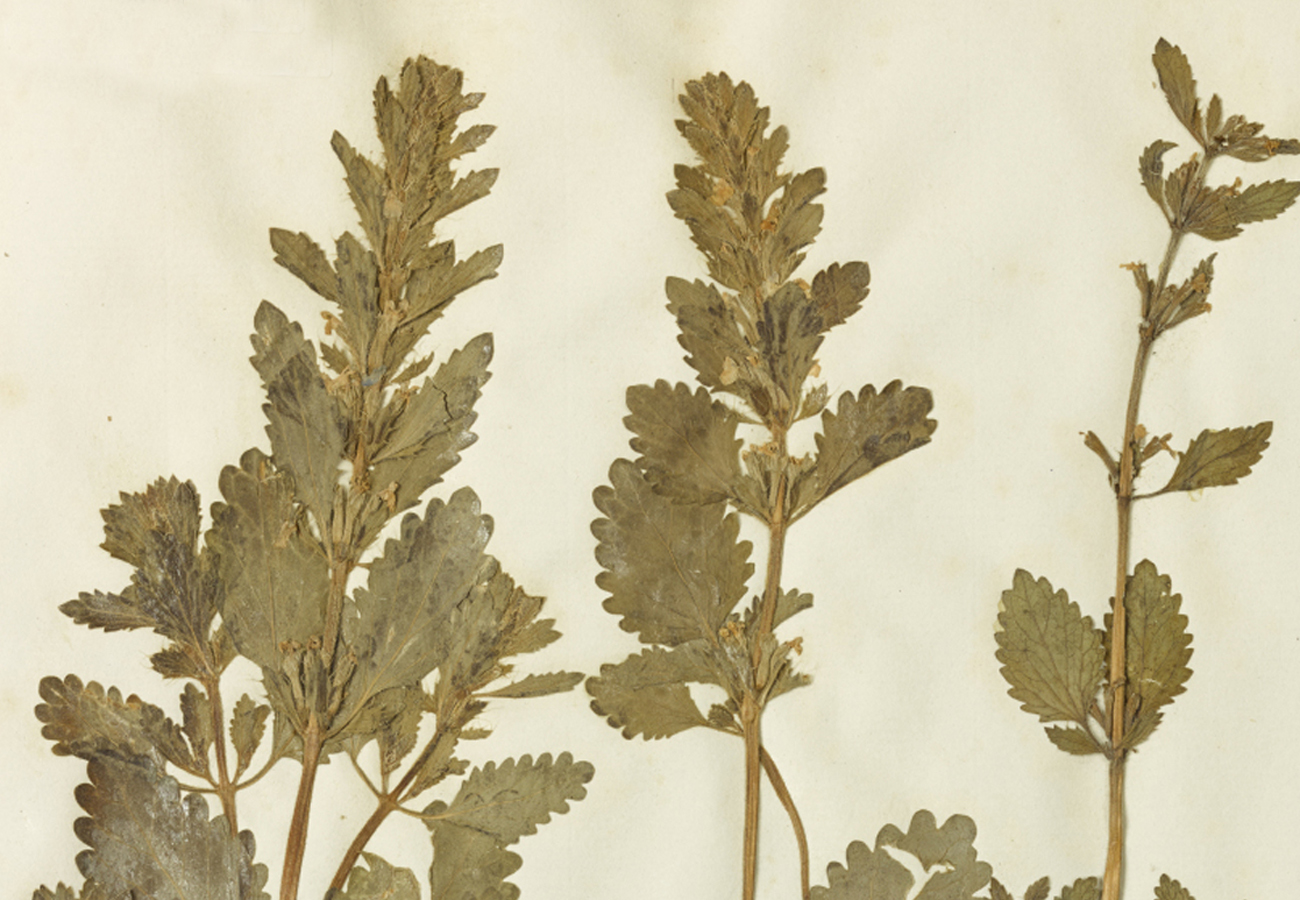Abstract
During our literature and herbarium studies, we have come across a typological issue regarding the name Dracocephalum royleanum (= Lallemantia royleana). In this paper, the nomenclatural history of L. royleana is presented and typification of D. royleanum is proposed.
References
<p>Al-Snafi, A.E. (2019) Pharmacological and Therapeutic Effects of Lallemantia Royleana - A Review. Journal of Pharmacy 9 (6): 43–50.<br>Bentham, G. (1830) Synopsis of the Genera and Species of Indian Labiatae enumerated in the Catalogue of the Collections in Dr. Wallich’s charge. In: Wallich, N. (Ed.) Plantae asiaticae rariores: or, Descriptions and figures of a select number of unpublished East Indian plants, vol. 1. Treuttel and Würtz, London, 100 pp.<br>Bentham, G. (1834) Labiatarum genera et species: or, a description of the genera and species of plants of the order Labiatae; with their general history, characters, affinities, and geographical distribution. James Ridgway and Sons, London, Fascicle 5, 860 pp.<br>Bentham, G. (1848) Labiatae. In: Candolle, A.P. de (Ed.) Prodromus systematis naturalis regni vegetabilis, vol. 12. Masson, Paris, 707 pp.<br>Boissier, P.E. (1844) Nepeta erodiifolia. Diagnoses Plantarum Orientalium novarum Ser. 5. Genevae [Geneva], Lipsiae [Leipzig].<br>Dorman, H.J.D., Peltoketo, A., Hiltunen, R. & Tikkanen, M.J. (2003) Characterization of the antioxidant properties of de-odorized aqueous extracts from selected Lamiaceae herbs. Food Chemistry 83: 255–262. https://doi.org/10.1016/S0308-8146(03)00088-8<br>Fischer, F.E.L. & Meyer C.A. (1840) Index seminum, quae Hortus Botanicus Imperialis Petropolitanus pro mutua commutatione offert. Accedunt Animadversiones botanicae nonnullae 6: 52. Petropoli. [Index Sem. Hort. Petrop. 6: 52].<br>Gorshkova, S.G. (1954) Lamiaceae. In: Schischkin, B.K. (Ed.) Flora SSSR [Flora of the U.S.S.R.], vol. 20. Izdatel’stvo Akademii Nauk SSR. [in Russian], Moscow & Leningrad, 389 pp.<br>Harley, R.M., Atkins, S., Budantsey, A.L., Cantino, P.D., Conn, B.J., Grayer, R., Harley, M.M., Kok, R. de, Krestovskaja, T., Morales, R., Paton, A.J., Ryding, O. & Upson, T. (2004) Labiatae. In: Kubitzki, K. & Kadereit, J.W. (Eds.) Families and genera of vascular plants, vol. 7, Flowering plants: Dicotyledons;Lamiales (except Acanthaceae including Avicenniaceae). Springer, Berlin, pp. 167–275. https://doi.org/10.1007/978-3-642-18617-2_11<br>Hedge, I.C. (1967) Studies in the flora of Afghanistan: VI. Notes on Royal Botanic Garden, Edinburgh 27: 149–173.<br>Hedge I.C. (1982) Labiatae. In: Rechinger, K.H. (Ed.) Flora Iranica, vol. 150, Academische Druck- u. Verlagsantalt, Graz-Austria, pp 403–476.<br>Karelin G.S. & Kirilov I.P. (1842) Dracocephalum inderiense. Bulletin de la Société Imperiale des Naturalistes de Moscou 15: 423.<br>Panuccio, M.R., Fazio, A., Musarella, C.M., Mendoza-Fernaìndez, A.J., Mota, J.F. & Spampinato, G. (2018) Seed germination and antioxidant pattern in Lavandula multifida (Lamiaceae): A comparison between core and peripheral populations. Plant Biosystems 152: 398–406. https://doi.org/10.1080/11263504.2017.1297333<br>Perrino, E.V., Valerio, F., Gannouchi, A., Trani, A. & Mezzapesa, G. (2021) Ecological and Plant Community Implication on Essential Oils Composition in Useful Wild Officinal Species: A Pilot Case Study in Apulia (Italy). Plants 10: 574. https://doi.org/10.3390/plants10030574<br>Santoyo, S., Cavero, S., Jaime, L., Ibanez, E., Senorans, F.J. & Reglero G. (2005) Chemical composition and antimicrobial activity of Rosmarinus officinalis L. essential oil obtained via supercritical fluid extraction. Journal of Food Protection 68: 790–795. https://doi.org/10.4315/0362-028X-68.4.790<br>Thiers, B. (2021) Index Herbariorum: a global directoryof public herbaria and associated staff. New York Botanical Garden’s Virtual Herbarium. Available from: http://sweetgum.nybg.org/ih (accessed 13 January 2021)<br>Turland, N.J., Wiersema, J.H., Barrie, F.R., Greuter, W., Hawksworth, D.L., Herendeen, P.S., Knapp, S., Kusber, W.H., Li, D.Z., Marhold, K., May, T.W., McNeill, J., Monro, A.M., Prado, J., Price, M.J. & Smith, G.F. (Eds.) (2018) International code of nomenclature for algae, fungi, and plants (Shenzhen Code) adopted by the Nineteenth International Botanical Congress Shenzhen. China, July 2017. Regnum vegetabile 159. Koeltz, Glashütten. https://doi.org/10.12705/Code.2018<br>Valerio, F., Mezzapesa, G., Gannouchi, A., Mondelli, D., Lo Grieco, A.F. & Perrino, E.V. (2021) Characterization and antimicrobial properties of essential oils from four wild taxa of Lamiaceae family growing in Apulia. Agronomy. [In press]<br>Wallich, N. (1828–1949) A numerical list of dried specimens of plants in the East India Company’s museum. collected under the superintendence of Dr. Wallich of the Company’s Botanic Garden at Calcutta. Lithographed manuscript, London. https://doi.org/10.5962/bhl.title.1917</p>


